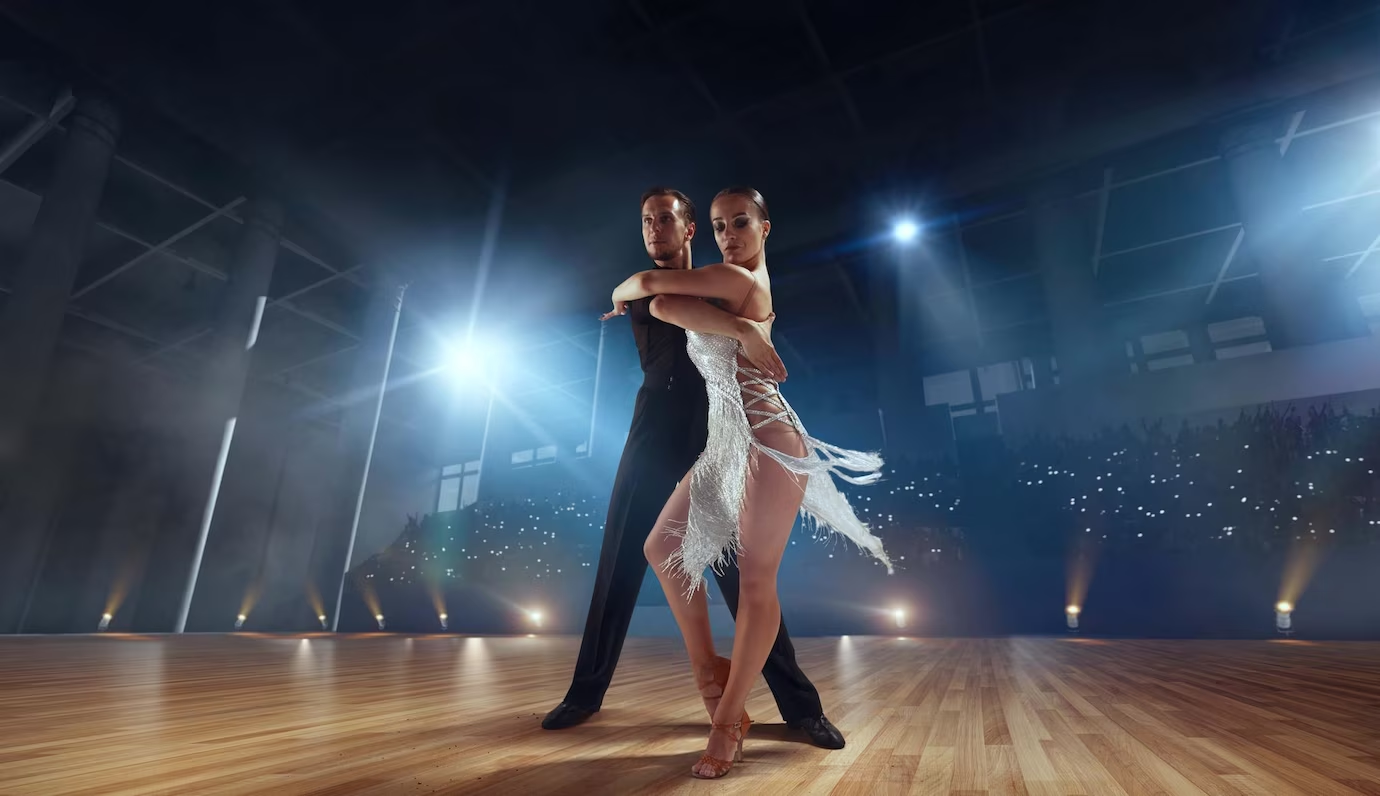
Exploring Latin Dance Styles: Beyond Samba and Salsa

Figure : Dance is an eternal language. Image courtesy: Freepik
Dance is an enriching facet of culture that embeds the spirit, history, and life of a community. Latin dance, for instance, is an illustrative compilation of various styles, each with distinctive elements unique to its origin. Prominently showcased exploring Samba and Salsa differences, both of which have gained worldwide recognition. But Latin dance extends beyond these two popular styles. This article is an exploration of the effervescent realm of Latin dance styles, venturing beyond Samba and Salsa.
The Spectrum of Latin Dance
The term “Latin Dance” serves as a collective umbrella for a diverse array of dance styles originating from various countries in Latin America, each with its own unique charm and rhythmic character. Samba, with its roots firmly embedded in the vibrant culture of Brazil, epitomizes the celebratory atmosphere of the nation’s renowned carnivals. This dance form exudes the quintessential Brazilian essence, incorporating the infectious allure of its music, the pulsating rhythms, and the lively footwork that collectively contribute to its festive mood.
In a parallel vein of popularity is Salsa, which originated in the streets of the Caribbean and evolved by drawing inspiration from a rich tapestry of influences such as Son Cubano and Mambo. This fast-paced dance style emanates a vivacity that is both seductive and joyous. By delving into the distinctions between Samba and Salsa, one can gain a deeper understanding of why these two styles are cherished worldwide. Despite sharing a common geographical origin, Samba and Salsa manage to maintain their individuality, each possessing a unique cultural imprint that resonates with enthusiasts globally.
Our journey, however, takes us beyond these two styles, opening doors to the less explored yet equally captivating territory of Latin dance styles.
- Tango: The Passionate Stride
Tango, with its roots tracing back to the border of Argentina and Uruguay, is a dance form that radiates intense passion and profound emotion. The essence of Tango lies in the intricate dialogue between dance partners, where they establish a connection that goes beyond mere physical movements. The dance is characterized by long, deliberate strides, adding a sense of drama and anticipation to each step.
- Bachata: Footwork and Romance

Figure : Bachata is a dance that emphasizes intricate footwork. Photo courtesy: Freepik.
Originating from the vibrant culture of the Dominican Republic, Bachata is a dance that places a distinct emphasis on intricate footwork and expressive body movements. Paired with its corresponding music genre, Bachata serves as a powerful storytelling medium, articulating themes of love, romance, and heartbreak through its rhythmic motions. What sets Bachata apart is its simplicity, prioritizing the profound connection between dance partners over elaborate and intricate steps.
- Merengue: Effervescence in Motion
Emerging from the lively cultural landscape of the Dominican Republic, Merengue is a dance that pulsates with high-energy rhythms, creating an infectious and lively atmosphere. A distinctive feature of Merengue is its unique hip action, which synchronizes seamlessly with the fervent tempo of the accompanying tunes. This dance style is known for its accessibility, often regarded as one of the easiest Latin dances to learn.
- Cha-Cha-Cha: The Playful Syncopation
Originating in Cuba, Cha-Cha-Cha is distinguished by its rhythmic syncopation on the fourth beat, a hallmark feature that sets it apart. This dance form, known for its light-hearted and playful nature, has a captivating rhythm that effortlessly draws in both dancers and spectators. The engaging syncopation, coupled with a marching-like step pattern, contributes to Cha-Cha-Cha’s dynamic and lively character.
Learning Latin Dance Styles
Latin dance is a rich tapestry of diversity, encompassing a spectrum of rhythms, stylistic expressions, and emotive resonances. It transcends mere physical movements, serving as a profound expression of history, culture, and emotion. It is essential to recognize that each dance style within the Latin genre is a cultural manifestation, carrying its own unique narrative and significance. Whether delving into the distinctions between Samba and Salsa or immersing oneself in the storytelling rhythm of Bachata, it is crucial to approach these dances with respect and appreciation for their cultural roots.
With the plethora of options within Latin Dance, choosing where to begin can be daunting. Enrolling in a dance class provides an excellent opportunity to learn the basics, gain insights into the background of each style, and discover one’s passion. These classes not only teach the technical aspects but also offer a cultural context, enhancing the overall dance experience. For those seeking a more flexible approach, various online resources provide insightful guides to initiate the journey into Latin dance, offering tutorials and information to support both beginners and enthusiasts looking to expand their dance repertoire.
Final Thoughts
Latin Dance is an adventure waiting to be discovered, filled with vibrant rhythms, rich cultural backgrounds and a broad range of emotions. Dance is a universal language and these styles, despite their regional roots, are embraced worldwide due to their compelling artistry and uplifting spirit. It’s time to explore beyond Samba and Salsa and step into the diverse world of Latin dance.
We can read more of our articles on Unveiling the Timeless Elegance of Cillian Murphy’s Style, Hermione’s Style: Timeless Elegance and Intelligence and Harry Potter’s Style: From the Boy Who Lived to a Fashion Icon
Feel free to write us at fashionnovationfd@gmail.com
